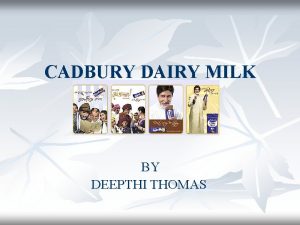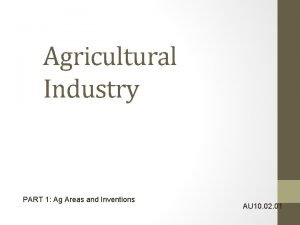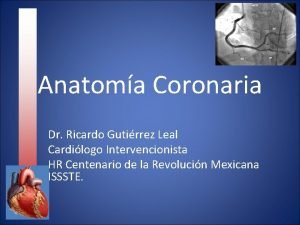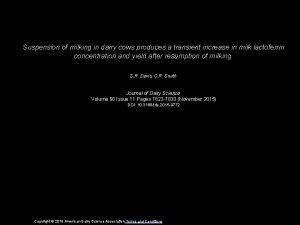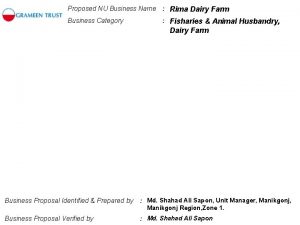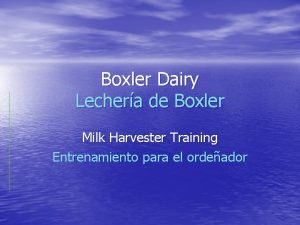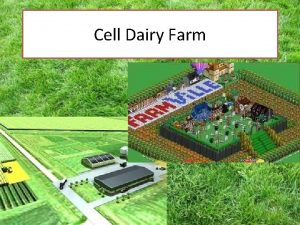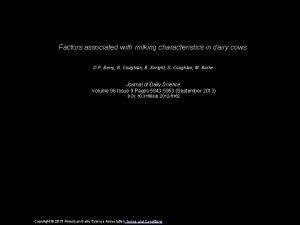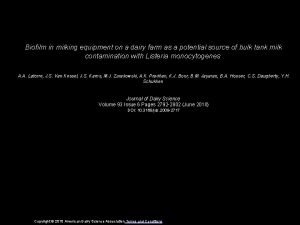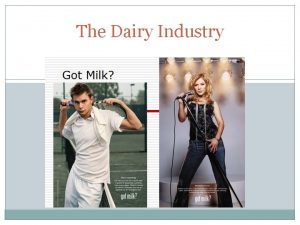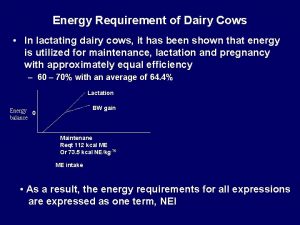MILKING TECHNOLOGY ON A DAIRY FARM Only cows







- Slides: 7

MILKING TECHNOLOGY

ON A DAIRY FARM Only cows, and not heifers, are milked every day. The process occours two or three times a day, 365 days a year. Nowadays milking technology is highly mechanized. The quantity of milk is partly sold to milk companies, for example Granarolo or Latte Varese, and is partly used to produce dairy products, such as cheese, yogurt, cream…

The milking machine is the most important piece of equipment on a dairy farm. It is used more often and more hours a year than any other piece of equipment, including the farm tractor. Milking machine design and function are critical for rapid and efficient removal of milk without damage to the teat and with minimal risk of transmitting diseases.

THE MILKING PROCESS 1. Milker's preparation: the hands of the person milking cows can become contaminated with pathogens and for this reason a milker must wear disposable latex gloves. 2. Cleaning the teats (pre-dipping): the teats are prepared with a solution that removes dirt and provides some sanitation to the teat skin.

3. Drying the teats: the milker uses a separate dry towel (usually paper or cloth) to wipe-off and dry the teats. 4. Application of the machine: the milker puts the cow on the milking unit within one minute after preparation, monitors the milking and adjusts the unit if it doesn't work properly or if the cow appears uncomfortable.

5. Detaching the machine at the end of milking: the milker takes off the unit when the milk flow has ceased or is very low. The vacuum must be turned off before the machine is removed. Otherwise, pulling the teat cups while the vacuum is still on may cause trauma to the teat ends. 6. Post-dipping: a germicide is used to protect the teat end for a period after milking, it kills pathogens that may be on the teat skin and minimizes the potential passage of those pathogens from one cow to the other at the next milking.

VOCABULARY Dairy farm: allevamento di vacche da latte Disposable gloves: guanti usa e getta Post-dipping: applicazione disinfettante dopo la mungitura Pre-dipping: applicazione disinfettante prima la mungitura Teat: capezzolo Teat end: estremità del capezzolo Teat skin: pelle del capezzolo Vacuum: vuoto
